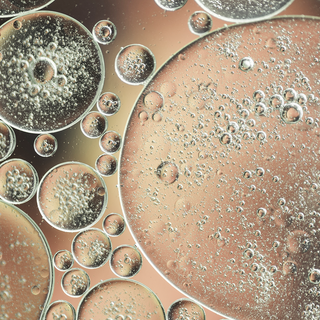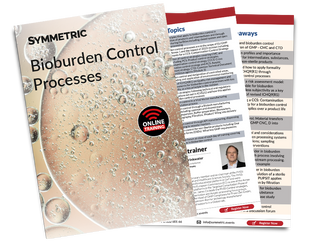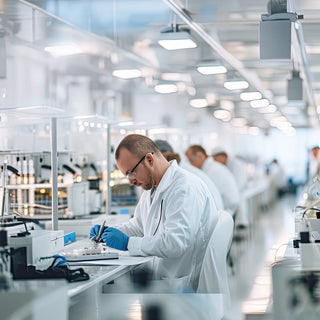

Course Description
In difference to Aseptic processing that applies to finished sterile products this course has a focus on Bioburden control applied to manufacture of biological intermediates, Drug substances (including vectors), APIs and non-sterile products that benefit (patients) from bioburden control. Annex 1 revision 2023 has an extended scope covering bioburden control processes. USP<1115> outlines the factors and influences of bioburden in facilities and processes. As regulations and guidance’s change it is important to understand regulatory expectations and principles to follow that contribute to assured ‘product’ quality at a defined and specified level.
A sites ‘product’ may not be the final finished product but an essential component or entity of a sterile product and typically subjected to manufacturing at different sites in dedicated facilities and/or completely separate to Fill and Finish activities. The quality oversight becomes more challenging as regulations are less specific and require interpretation. Bioburden control can apply upstream and downstream to drug substance with different levels of acceptance and control. Learn about bioburden control in ‘Closed’ systems and where open interventions apply e.g. Seeding inoculation how bioburden control is applied.
Some bioburden is inherent and acceptable at specified (justified) levels but in all cases must meet a specified level or microbial flora profile so control is required. This course will consider regulatory expectation the application of the principles of Quality Risk Management (QRM) ICHQ9(R1) over the product Life Cycle (ICHQ12).
Bioburden control as with all contamination control is assured in the first instance by design that combines facility and process design with good procedural design. Annex 1 has a requirement for a CCS: Contamination control Strategy and it is considered such a strategy should also apply to bioburden control processes but at a level that is ‘Phase appropriate’ and commensurate to process knowledge, complexity and risks of harm to patients. Learn about a CCS application for a bioburden control process and connection of the CCS to other Control strategies.
Bioburden in biological processes for manufacturing intermediates or substances can compromise the efficacy and mechanisms that apply to the advanced therapy or medicinal product as a component of a finished sterile product. So risks from bioburden contamination are not entirely about compromise of sterility of final products. Oral solid dose forms, if contaminated with unacceptable bioburden can cause harm to patients, particularly those with compromised immune systems.
Bioburden matters so control is an essential part of processing/ manufacturing. Learn where, how and when control is applied.
Course Description
In difference to Aseptic processing that applies to finished sterile products this course has a focus on Bioburden control applied to manufacture of biological intermediates, Drug substances (including vectors), APIs and non-sterile products that benefit (patients) from bioburden control. Annex 1 revision 2023 has an extended scope covering bioburden control processes. USP<1115> outlines the factors and influences of bioburden in facilities and processes. As regulations and guidance’s change it is important to understand regulatory expectations and principles to follow that contribute to assured ‘product’ quality at a defined and specified level.
A sites ‘product’ may not be the final finished product but an essential component or entity of a sterile product and typically subjected to manufacturing at different sites in dedicated facilities and/or completely separate to Fill and Finish activities. The quality oversight becomes more challenging as regulations are less specific and require interpretation. Bioburden control can apply upstream and downstream to drug substance with different levels of acceptance and control. Learn about bioburden control in ‘Closed’ systems and where open interventions apply e.g. Seeding inoculation how bioburden control is applied.
Some bioburden is inherent and acceptable at specified (justified) levels but in all cases must meet a specified level or microbial flora profile so control is required. This course will consider regulatory expectation the application of the principles of Quality Risk Management (QRM) ICHQ9(R1) over the product Life Cycle (ICHQ12).
Bioburden control as with all contamination control is assured in the first instance by design that combines facility and process design with good procedural design. Annex 1 has a requirement for a CCS: Contamination control Strategy and it is considered such a strategy should also apply to bioburden control processes but at a level that is ‘Phase appropriate’ and commensurate to process knowledge, complexity and risks of harm to patients. Learn about a CCS application for a bioburden control process and connection of the CCS to other Control strategies.
Bioburden in biological processes for manufacturing intermediates or substances can compromise the efficacy and mechanisms that apply to the advanced therapy or medicinal product as a component of a finished sterile product. So risks from bioburden contamination are not entirely about compromise of sterility of final products. Oral solid dose forms, if contaminated with unacceptable bioburden can cause harm to patients, particularly those with compromised immune systems.
Bioburden matters so control is an essential part of processing/ manufacturing. Learn where, how and when control is applied.

Bioburden Control Processes
Download the full training agenda to reveal complete session details, training takeaways, case studies, daily schedule, special features and full trainer bio.

In-house Training
Looking for tailored training solution?
All of our pharma & biotech training courses can be delivered at your company premises at a time that suits you. If you can not find what you are looking for in our public training offering, our trainers and producers will develop bespoke programmes to address your training needs.





